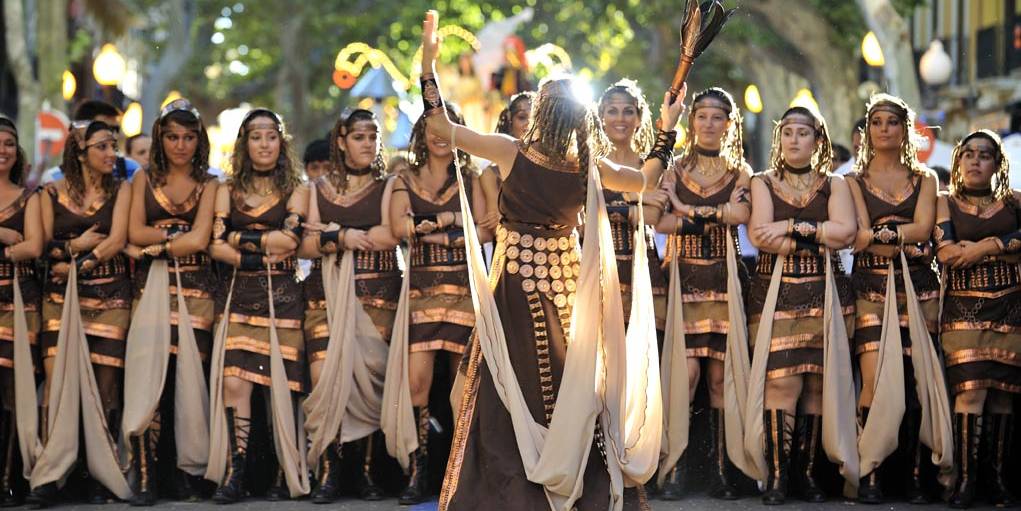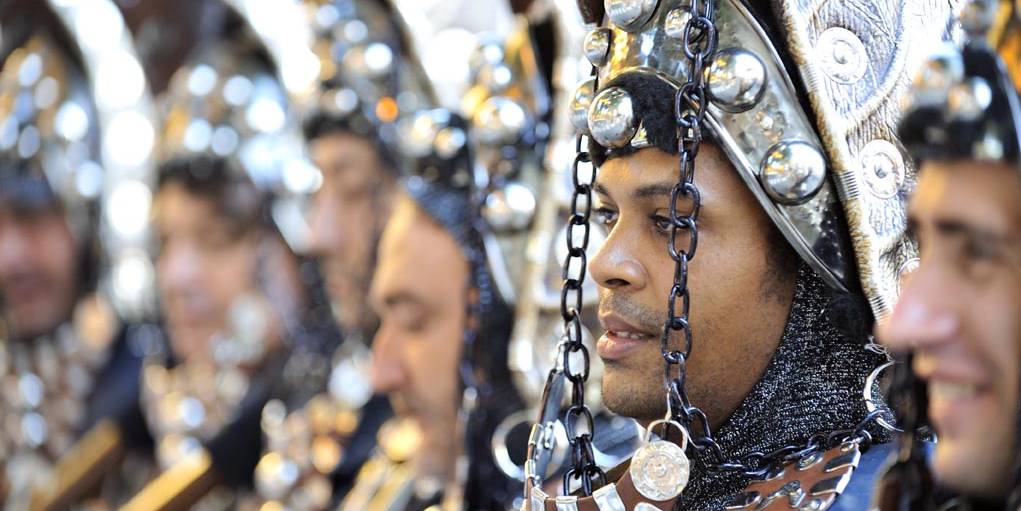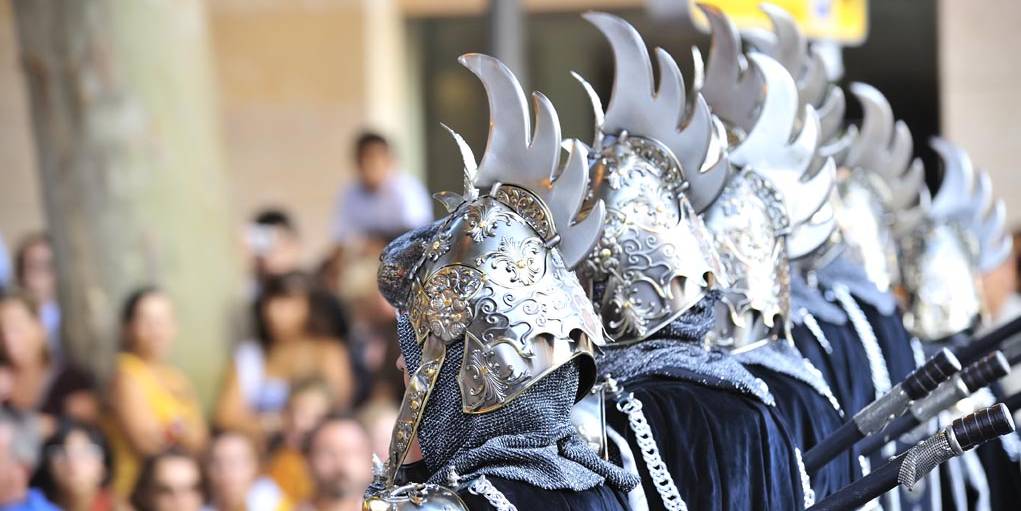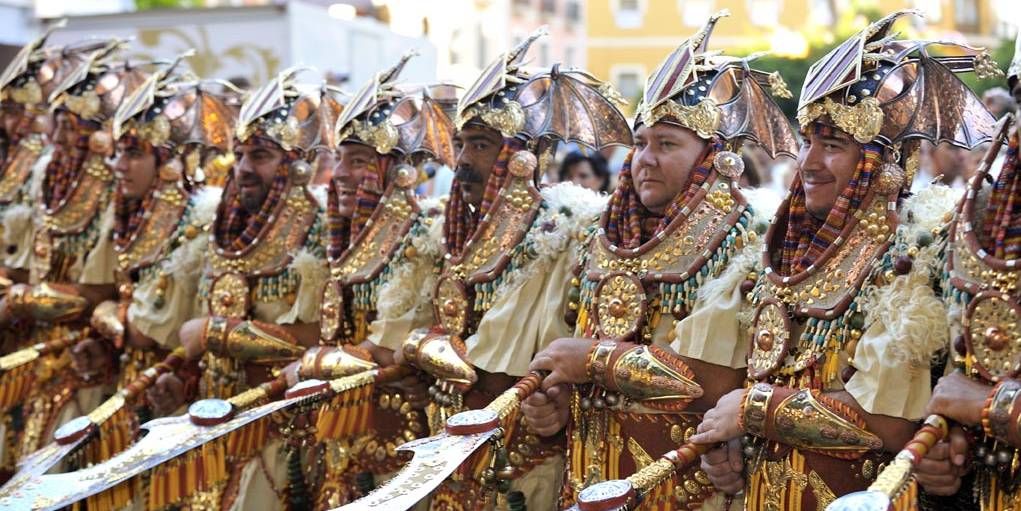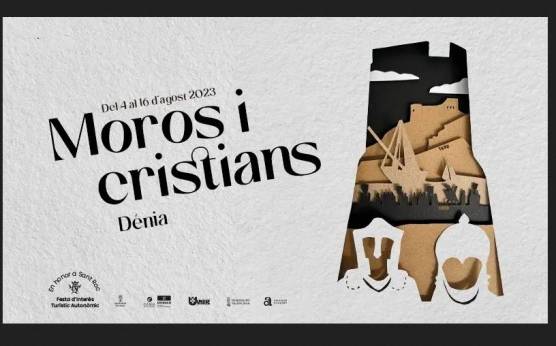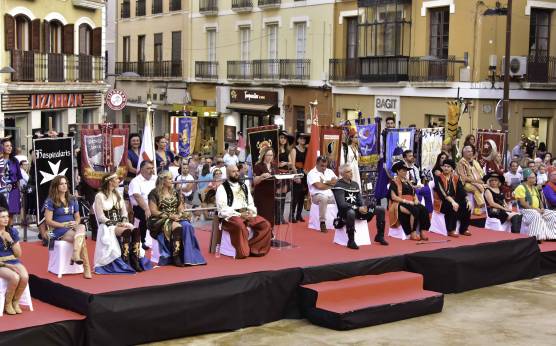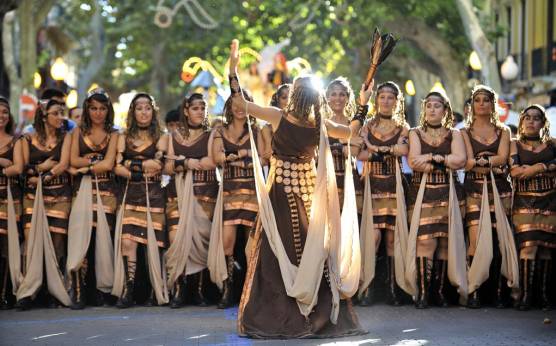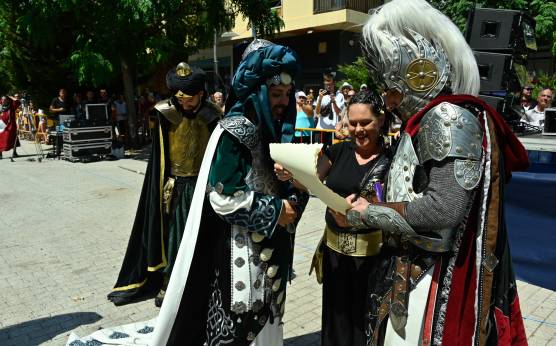Fiestas in honour of Saint Roc (4th to the 16th of August)
HISTORY
The festivity of Moors and Christians in Dénia has its roots in the frequent attacks of Berber, Turkish, and Algerian corsairs that battered our coasts during the 16th and 17th centuries. These confrontations and captures of vessels by the deniers marked the history of the region.
Dénia takes pride in having the one of the oldest celebrations of Moors and Christians in the Valencian Community, whose origins date back to the 16th century and have been documented in various writings throughout time.
The oldest reference dates back to 10th of September 1556, when Dénia, at that time the best-fortified city in the marquisate, suffered a surprise attack by Algerian corsairs with 10 galleys and 600 men. At that moment, the Dianense troops were outside supporting a false attack in Javea, leaving the city unprotected. However, the steadfast defense of the inhabitants of Dénia managed to repel the attack and save the city. This event deeply affected the population, and in commemoration, a procession called "when the Moors arrived at Saladar" was established. Over time, this religious celebration turned into a festivity that recalled the attacks of the Muslim corsairs, which persisted until the late 17th century.
Another important historical moment, marking the very structure of the festival, occurred between the 11th and 16th of February 1599, when King Philip III visited Dénia in one of his three visits to the city. During his stay, his confidant, Francisco Gómez de Sandoval y Rojas, Duke of Lerma and Marquis of Dénia, with the collaboration of the entire population, prepared a series of festive activities for the entertainment of the king and his court. One of the acts was a Moors and Christians battle in the port, organized by the Council (City Hall) of Alicante, with a brigantine and four frigates crewed by men dressed in the "Turkish and Moorish style". The celebration continued on land with the taking of the castle and culminated in its subsequent reconquest by Christian troops. The famous poet Lope de Vega chronicled these festivities in a poem titled "Festivals of Dénia to King Catholic Philip III," where he narrated the events of the castle's conquest by both Moors and Christians.
In writings from the late 18th century, it is mentioned that the celebration of Moors and Christians was associated with the festivities of the Holy Blood. During this celebration, the sailors from the Marina neighborhood of Dénia (current Baix la Mar) represented the Moors and Christians in all their stages, with parades, naval battles, parliaments, the taking of the castle, and a grand final battle. These events included the use of gunpowder, religious ceremonies, music, and theatrical performances in the square (current Plaza de la Constitución), coinciding with the 100-year celebration of Saint Teodor.
The Moors and Christians festivals are, therefore, ancient celebrations that have endured for almost 500 years. It is a valuable historical legacy that has managed to maintain its essence throughout the centuries, proudly remembering the bravery and struggle of its ancestors against pirate attacks and paying homage to the region's traditions. It's inevitable that they have evolved over the centuries, changing the celebration date or the patron saint, but undoubtedly keeping the essence of the festival with naval battles, castle sieges, fireworks, music, processions, and much more.
In the late 18th century, early 19th century, these Moros y Cristians festivals, along with their related events, gradually faded away without a clear reason until their revival in 1980. Possible factors include demographic and cultural changes, or, during the 20th century, the expansion of the 'fallas' celebrations.
It wasn't until 1980 that the modern Moros y Cristianos festivities were rescued and celebrated in their current form. For a bit of history, it's relevant to mention that by the late 1970s, the celebration of San Roque was beginning to decline. A group of 'mayorales' close to the Falla Centro, in collaboration with residents of Dénia with Alcoy roots, decided that the patron saint should not be forgotten, and thus they revived an old festivity. The celebration would take place over 4 days in August, from the 13th to the 16th, in direct connection with the feast of Sant Roc. This well-matched marriage of convenience has endured uninterrupted to this day and enjoys indisputable popularity, both among the local population (with the constant increase in the number of 'filaes' participating during the festivities) and among the visitors who come to our city.



